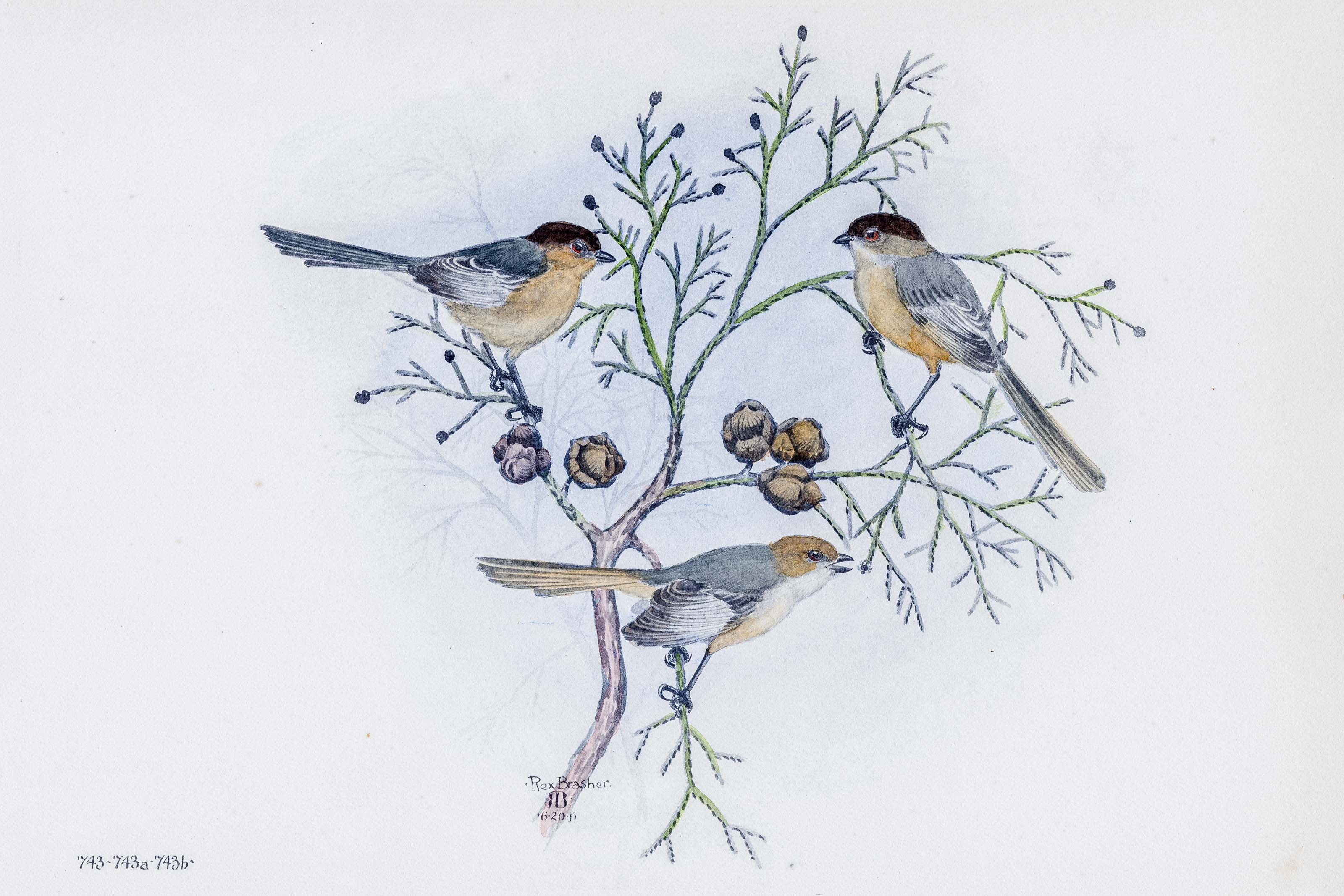
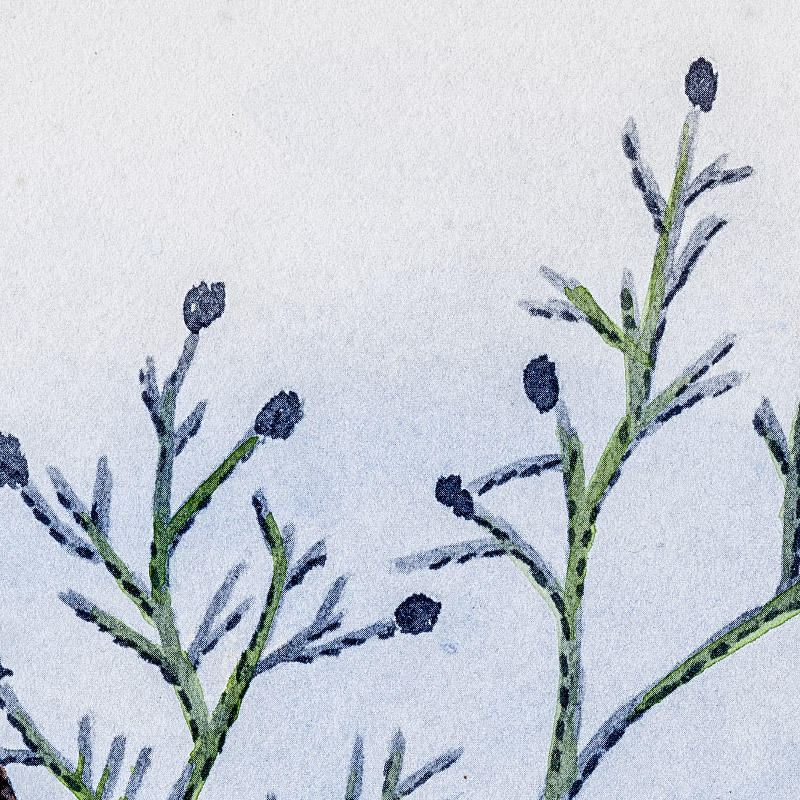
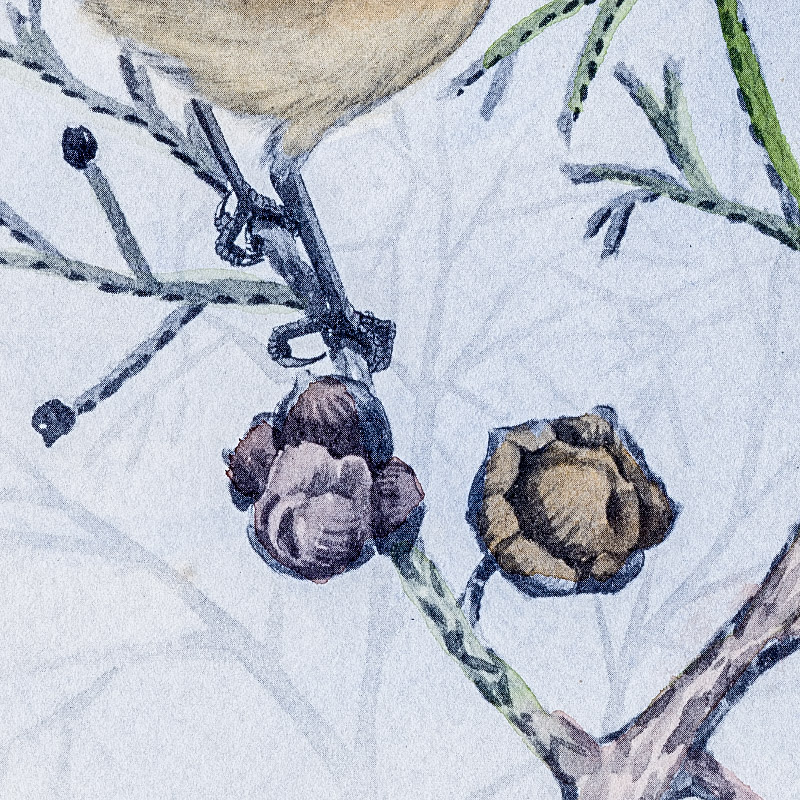
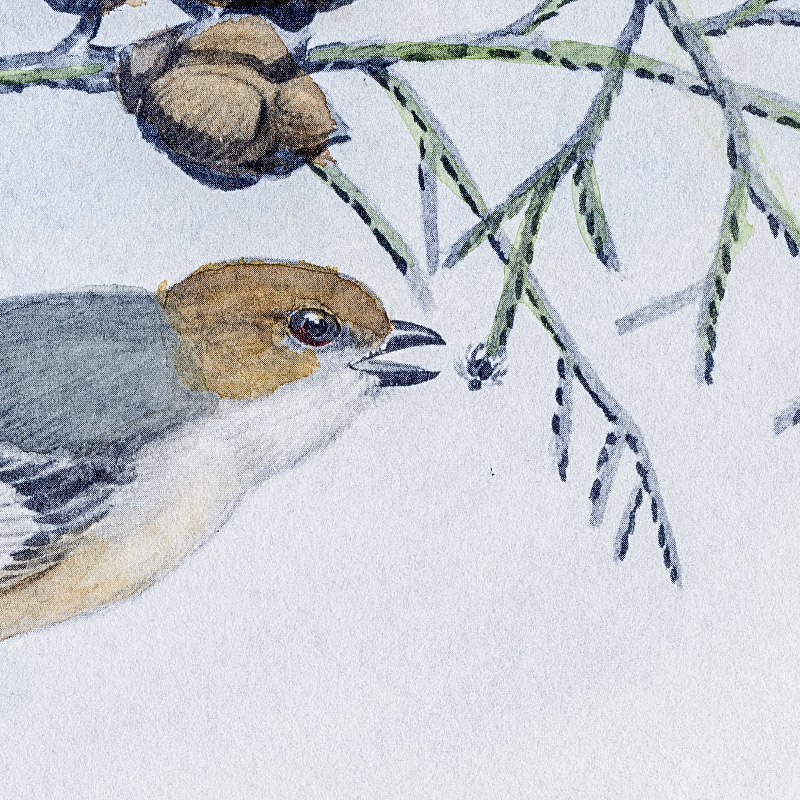

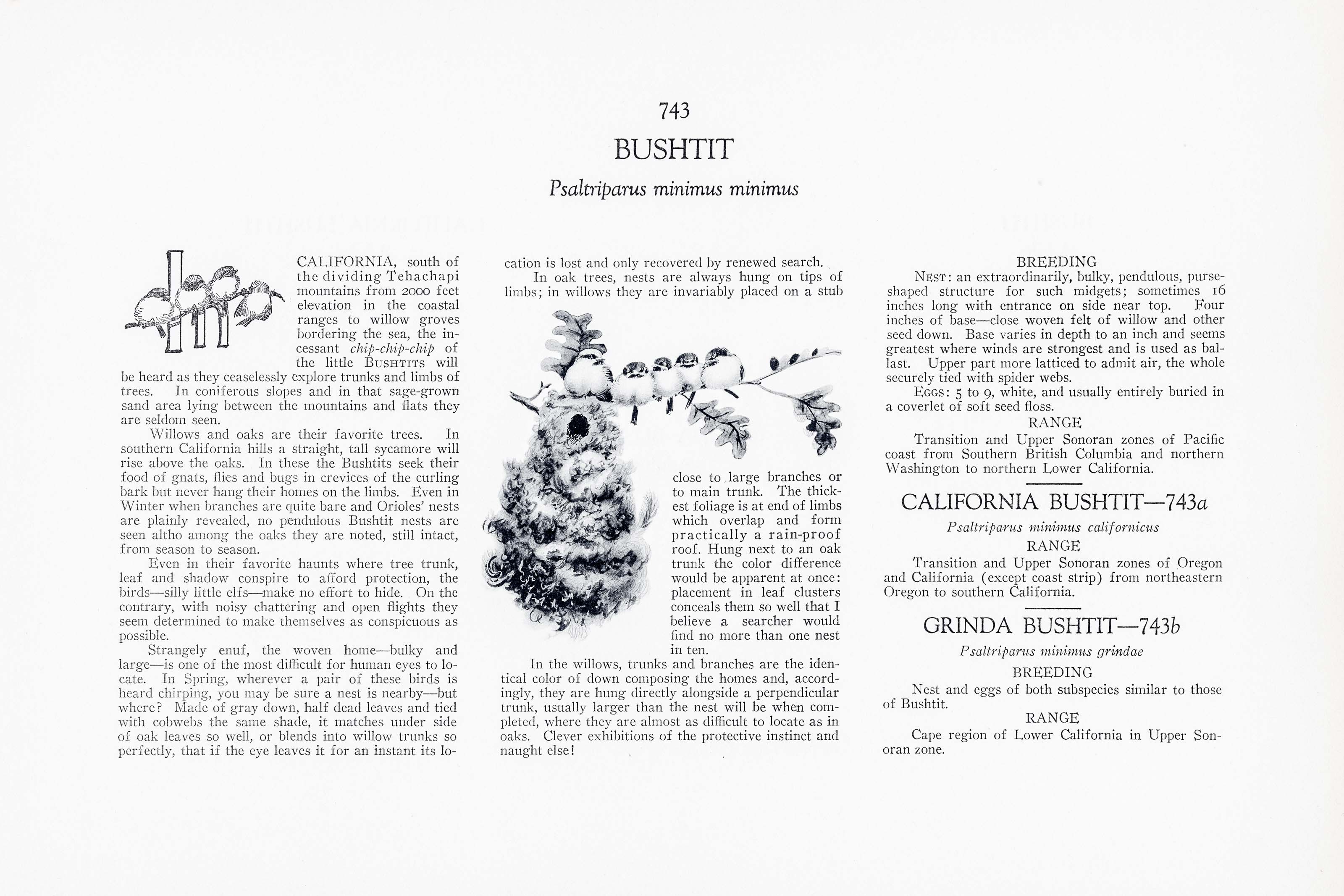

1911
1929
12
743-743a-743b
A team of dedicated board members, volunteers, and student interns has published every page in Volume 9. This volume includes 360 images of paintings and lyrical descriptions of birds, now available online for everyone to enjoy anywhere in the world. This is a monumental task. Each volume requires approximately 400 hours to photograph, edit, transcribe, catalog, and publish online. We need your support to complete this work.
If you're tech-savvy, have a good eye, are meticulous with details, and love structured data, please consider volunteering by emailing us at hello@rexbrasher.org.
We encourage all bird lovers and supporters to consider a monetary donation to support our mission to make Rex's work available for everyone. You can provide a one-time or recurring donation online.
In CALIFORNIA, south of the dividing Tehachapi mountains from 2000 feet elevation in the coastal ranges to willow groves bordering the sea, the incessant chip-chip-chip of the little BUSHTITS will be heard as they ceaselessly explore trunks and limbs of trees. In coniferous slopes and in that sage-grown sand area lying between the mountains and flats they are seldom seen.
Willows and oaks are their favorite trees. In southern California hills a straight, tall sycamore will rise above the oaks. In these the Bushtits seek their food of gnats, flies and bugs in crevices of the curling bark but never hang their homes on the limbs. Even in Winter when branches are quite bare and Orioles' nests are plainly revealed, no pendulous Bushtit nests are seen altho among the oaks they are noted, still intact, from season to season.
Even in their favorite haunts where tree trunk, leaf and shadow conspire to afford protection, the birds — silly little elfs — make no effort to hide. On the contrary, with noisy chattering and open flights they seem determined to make themselves as conspicuous as possible.
Strangely enuf, the woven home — bulky and large — is one of the most difficult for human eyes to locate. In Spring, wherever a pair of these birds is heard chirping, you may be sure a nest is nearby — but where? Made of gray down, half dead leaves and tied with cobwebs the same shade, it matches under side of oak leaves so well, or blends into willow trunks so perfectly, that if the eye leaves it for an instant its location is lost and only recovered by renewed search.
In oak trees, nests are always hung on tips of limbs; in willows they are invariably placed on a stub close to large branches or to main trunk. The thickest foliage is at end of limbs which overlap and form practically a rain-proof roof. Hung next to an oak trunk the color difference would be apparent at once: placement in leaf clusters conceals them so well that I believe a searcher would find no more than one nest in ten.
In the willows, trunks and branches are the identical color of down composing the homes and, accordingly, they are hung directly alongside a perpendicular trunk, usually larger than the nest will be when completed, where they are almost as difficult to locate as in oaks. Clever exhibitions of the protective instinct and naught else!
NEST: an extraordinarily, bulky, pendulous, purseshaped structure for such midgets; sometimes 16 inches long with entrance on side near top. Four inches of base — close woven felt of willow and other seed down. Base varies in depth to an inch and seems greatest where winds are strongest and is used as ballast. Upper part more latticed to admit air, the whole securely tied with spider webs.
EGGS: 5 to 9, white, and usually entirely buried in a coverlet of soft seed floss.
Transition and Upper Sonoran zones of Pacific coast from Southern British Columbia and northern Washington to northern Lower California.
Transition and Upper Sonoran zones of Oregon and California (except coast strip) from northeastern Oregon to southern California.
Nest and eggs of both subspecies similar to those of Bushtit.
Cape region of Lower California in Upper Sonoran zone.
A 50–60 foot tree, with 2–3, sometimes 6-foot trunk, distributed in a narrow strip from Cypress Point to Carmel Bay, 2 miles long: and a small grove on Point Lobos, California.